This post may contain affiliate links. Please see my disclosure policy for more details.
If you’re thinking of moving Down Under, knowing how Medicare Australia, the public healthcare system, works is vital.
I had no idea how Medicare worked when I moved to Australia. I’d read about it online, but didn’t really get my head around it until I started using the system. Since it’s not completely free like the NHS in the UK, people tend to assume Medicare Australia is a totally private healthcare system and that you have to have health insurance to live here.
This isn’t true at all. Medicare is heavily funded by the Australian government, and many services are completely free. I go through how Medicare is funded by tax levies at the end of this post.
I can honestly say I’ve been thoroughly impressed with the Australian healthcare system, which is known as one of the best in the world. I’ve been diagnosed with a few chronic illnesses since moving here, and have been very well looked after and smoothly sent to see the necessary specialists, have the right tests and monitored on an ongoing basis.
Read on to find out how Medicare Australia works, what costs to expect, waiting times and overall standards of care based on my experience. If you prefer video format, watch my YouTube video below instead.
Medicare Australia Guide
Here is a list of topics on the Australian healthcare system that I’ve included in this blog post. To skip to a section, click on the links below.
- 1. Medicare Eligibility Australia – Are You Covered?
- 2. Reciprocal Healthcare Agreement – Is Your Country on the List?
- 3. Which Services are Covered by Medicare Australia?
- 4. How Do You Pay for Medical Services in Australia?
- 5. What is Bulk Billing?
- 6. How Much Does it Cost to See a Doctor in Australia?
- 7. What are GP Surgeries Like in Australia?
- 8. How Much Does it Cost to See a Specialist in Australia?
- 9. Blood Tests in Australia
- 10. Hospital Tests and A&E/ER in Australia
- 11. Having a Scan (Ultrasound/X-Ray/MRI)
- 12. How Much Does Prescription Medication Cost in Australia?
- 13. How Do I Apply for a Medicare Card?
- 14. How to Set up Your Medicare Online Account
- 15. How is Medicare Funded?
- 16. Do You Need Health Insurance in Australia?
1. Medicare Eligibility Australia
If you’re moving to Australia, check the Medicare eligibility criteria to find out if you’re allowed to enrol. Eligible people include those who live in Australia and are an Australian or New Zealand citizen, an Australian permanent resident (or applying for permanent residency) or a temporary resident covered by a ministerial order.
If you’re not in those categories, keep reading to find out if your home country has a reciprocal agreement with Australia.
2. Reciprocal Healthcare Agreement
Australia has reciprocal health care agreements with the following 11 countries: Belgium, Finland, Italy, Malta, Netherlands, New Zealand, Norway, Republic of Ireland, Slovenia, Sweden and UK.
If you’re from one of these countries and visiting Australia, you may be eligible for Medicare cover during your visit. For example, when I came to Australia on a working holiday, I was able to get a Medicare card, as I’m from the UK.
Check the relevant page for your country on Medicare’s reciprocal health care agreements section.
Find out all the other important things you need to do before and during your working holiday in my guide on the working holiday in Australia.
3. Which Services are Covered by Medicare Australia?
For full details, read this government overview of what Medicare Australia covers.
As a brief summary, Medicare Australia covers:
Hospital care: as a public patient in a public hospital (for no charge);
Medical care: visiting a doctor or specialist outside of a hospital (you may still have to pay some fees yourself though – see section 4 below);
Pharmaceuticals: part of the cost of prescription medicines (this varies for each type of medication). See section 12 for more details.
Services that Medicare does not cover include ambulance services, most dental work and services not clinically necessary.
4. How Do You Pay for Medical Services in Australia?
For medical services outside of a public hospital, for example, seeing a GP or specialist, or having a scan, there are three figures involved, which I’ll set out as follows:
- A – The amount you pay for the service
- B – The rebate you receive from Medicare
- C – Your out-of-pocket expense or gap fee (C = A – B)
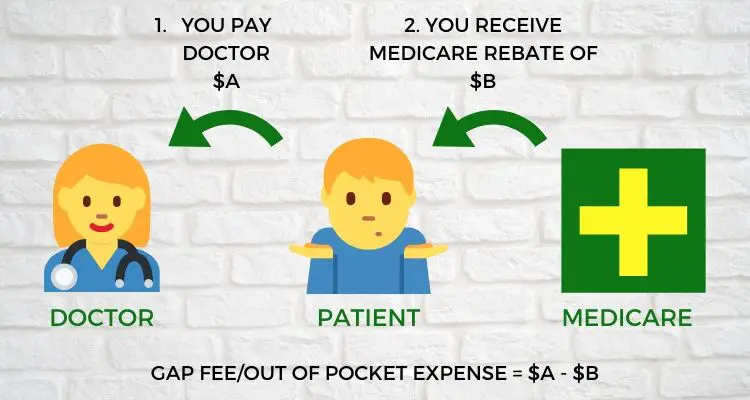
In terms of A, each doctor outside of a public hospital sets their own fee, so this can vary depending who you’re seeing and where.
In terms of B, the amount you get back from Medicare (your rebate) is a fixed amount depending on what service you’ve received. The list of schedule fees is set out in the Medicare Benefits Schedule if you want to read more.
The rebate (B) you’ll receive is a portion of the schedule fee: 100% for a GP visit, 85% for a service outside of hospital and 75% of a service provided in a hospital.
The difference between A and B is C, your out-of-pocket expense, otherwise known as a gap fee. Some services will have a gap fee of $0, which means the service is charged at the exact amount of your Medicare rebate (so A = B). This is known as bulk billing, which I’ll explain in section 5 below.
When you book a medical appointment, the receptionist will tell you how much you’ll be charged and how much your rebate will be. After your appointment, you’ll need to pay at reception and they’ll normally ask if you’d like them to process your rebate for you.
This means you don’t have to do anything at all and Medicare will rebate you automatically. This is very fast, and usually the rebate shows on my bank statement before the payment comes out on my card.
To make sure you don’t pay too much in one year, there are Medicare Safety Nets in place. Once you’ve spent over $477.90 on out-of-pocket expenses in a calendar year, you’ll start receiving higher rebates on certain services. Read through the government Medicare Safety Net information for details.
5. What is Bulk Billing?
With bulk billing, the healthcare professional doesn’t charge you above the value of the applicable Medicare rebate, so there are no out-of-pocket expenses for you to pay. In other words, it’s a free service.
Rather than you paying for the service and Medicare rebating you the exact same amount, you are missed out of the equation completely, and the doctor bills Medicare directly.
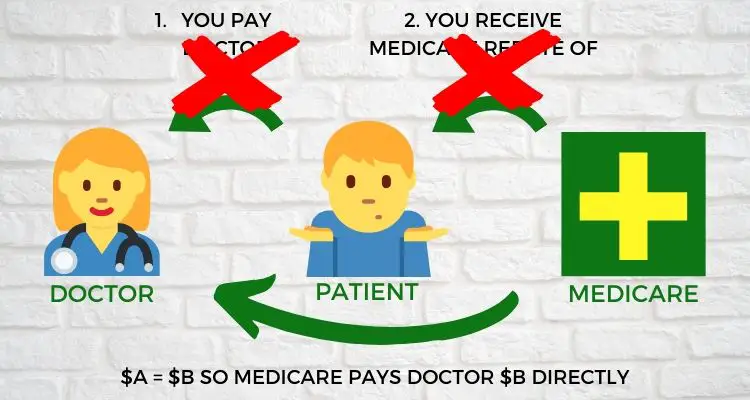
In my experience, blood tests, eye tests with an optometrist, x-rays and some GP visits are bulk billed in Australia.
6. How Much Does it Cost to See a Doctor in Australia?
The good news is that you can see a GP for free in Australia through Medicare; you just need to make sure you use a practice that offers bulk billing.
Many doctors offer bulk billing, but I’ve also paid some GPs around a $40 gap fee for an appointment. At the centre I go to some GPS used to be free, but they now all charge a fee. Here’s an example of some costs I’ve paid.
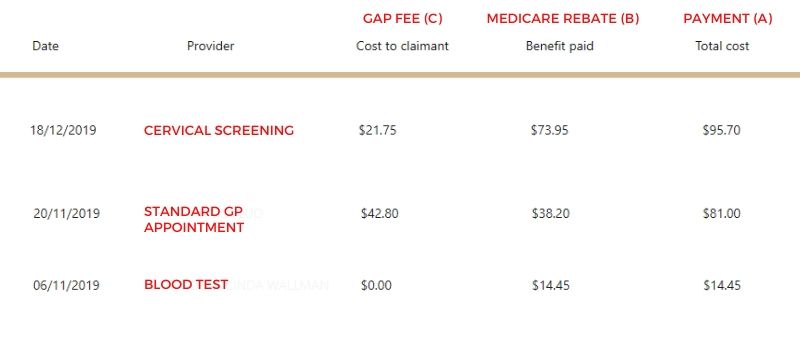
7. What are GP Surgeries Like in Australia?
I’ve been really impressed with the GP/primary care service in Australia. I can always get an on-the-day appointment; even if I look online at 3pm there is always about five doctors available throughout the afternoon and evening. If I want to see a specific doctor I might have to wait two or three days at most.
The standard appointment length with a GP is fifteen minutes, but you can book a double appointment for something complicated. They do have nurses at the surgeries, but GPs carry out vaccinations and cervical screenings in Australia.
The doctors never seem rushed and have always been very polite and thorough. The waiting room is never packed either! There’s also no hesitation to refer you to specialists when necessary or to book you in for scans and tests.
8. How Much Does it Cost to See a Specialist in Australia?
This is where it gets more expensive. Specialists usually work from private rooms, either at their own centre or in a specialist suite attached to a GP surgery.
You pay a higher fee for an initial appointment (around 45-60 minutes), and then a lower price for a shorter, follow-up appointment (about 20 minutes) once they’ve received the results from any tests they’ve booked you in for.
The costs really vary, but here are the prices of the specialists I’ve seen in Sydney. I must say that even though it’s cost a lot the care I’ve received from specialists in Australia has been great. They’ve all been very thorough and caring, spent a long time with me, and established an ongoing relationship with regards to communicating results and following through on treatments.
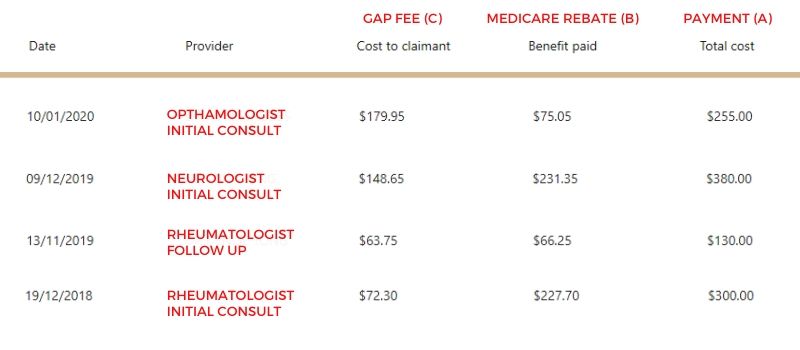
You can also see some specialists in public hospitals (I’m not sure if this is free or just cheaper), which I didn’t realise for a couple of years. GPs will normally just refer you straight to specialists at their private rooms. The waiting lists can be long in hospitals through; I tried to book one once and he was full for over two months. You could ask your doctor about this option though.
9. Blood Tests in Australia
All blood tests I’ve had in Australia have been free (apart from one for a rare disease where the sample had to be sent to Queensland).
Rather than going to a public hospital to have blood tests done, a practice called Laverty Pathology in NSW and ACT carry these out in private rooms, either attached to GP surgeries or in their own stand-alone building on a high street.
You just take your list of tests required from the GP to any Laverty centre, even one that’s in a different area to where you live, and have your tests done. I usually get mine done in the GP practice I use and have rarely had more than one person waiting in front of me. On one occasion my GP personally called me a few hours after the tests to tell me the results!
10. Hospital Tests and A&E/ER in Australia
It’s free to be treated as a public patient in a public hospital under Medicare. I’ve had a couple of tests done in public hospitals in Australia and been to Accident and Emergency/ER once, which was all free of charge.
The doctor referring you for tests contacts the hospital on your behalf, and the hospital rings you to arrange a suitable appointment time.
I had a sleep EEG and a tilt table test with autonomic testing at the RPA hospital in Sydney, which both had a waiting list of around a month. There was a wait of about three hours in A&E.
11. Having a Scan (Ultrasound/X-Ray/MRI)
I’ve found it extremely fast to get an x-ray or ultrasound scan booked in Australia. In Sydney’s Inner West an independent Radiology group called Alfred Imaging carry out scans in clinics that are separate to hospitals.
Your GP gives you a referral letter which has a list of imaging centres to choose from. You just call up your nearest centre to book an appointment and bring your referral letter with you when you have the test.
X-rays are free and you can just walk in without booking. I’ve always managed to get ultrasound appointments for the next day and paid a gap fee of around $50 per scan.
Just like with a GP or specialist, you pay at reception afterwards and they put through your Medicare rebate for you. You also get a copy of the images from your scans to take home, which really confused me the first time as I thought I had to transport them to my GP!
I’ve also had a couple of brain MRIs (with MRA/MRV). There’s only one centre in Sydney that offers bulk-billed MRIs (i.e. completely free) under Medicare: a place called I-MED Radiology in Miranda, about an hour south of the city. There’s usually a month-long waiting list, and you will need a referral from a specialist not a GP.
12. How Much Does Prescription Medication Cost in Australia?
Prescription medication for most medical conditions is subsidised by Medicare through the Pharmaceutical Benefits Scheme (PBS). For full information, read about the PBS on the Australian government website.
A couple of main highlights are:
1. Your co-payment (the amount you personally pay towards your medication) is capped at $41.00 for most PBS medicines from 1st January 2020 (or $6.60 if you have a concession card).
2. There is a Safety Net threshold of $1,486.80 (or $316.80 for concession card holders) as of 1st January 2020. If your total medication costs reach that amount, for the rest of the calendar year general patients will make co-payments at the concessional rate, and concession card holders will receive free PBS medications.
I pay between $5 and $18 for the medications I take, which work out less than $1 per day.
The chemist will usually ask if you’re happy to have a generic brand, which makes it cheaper. I also didn’t realise for ages that different pharmacies can charge vastly different amounts for the same medications! Oh, and note that they say “script” not “prescription”!
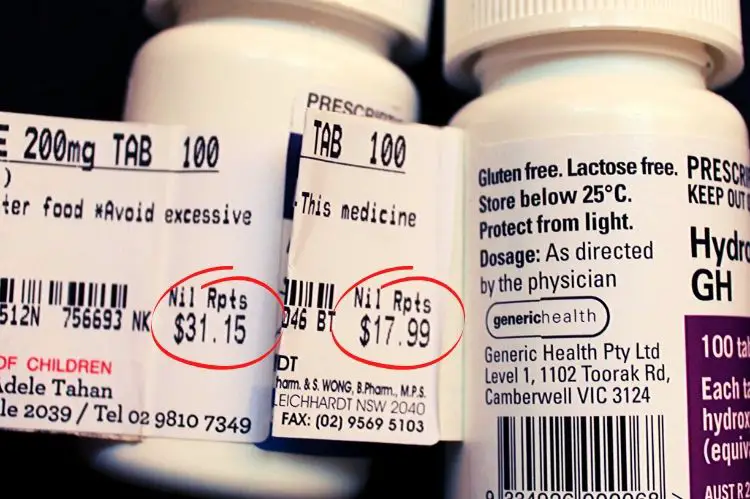
Chemist Warehouse is by far the cheapest I’ve found, and charges almost half of some smaller chemists. It’s a big chain, so you should find one easily. Although by the time you’ve circled the shop waiting for your order, you may end up buying more than you’ve saved!
Do your research before you come over to Australia though, particularly if you have a pre-existing condition. I knew a British couple who wanted to move to Australia on a sponsorship visa, but didn’t as their medication would have cost too much.
13. How Do I Apply for a Medicare Card?
To get your own Medicare card you’ll need to print off a Medicare enrolment form and take it to your nearest Medicare Service Centre with the required supporting documents.
For full instructions, including the documents you’ll need, follow the Medicare enrollment procedure on the Australian government website.
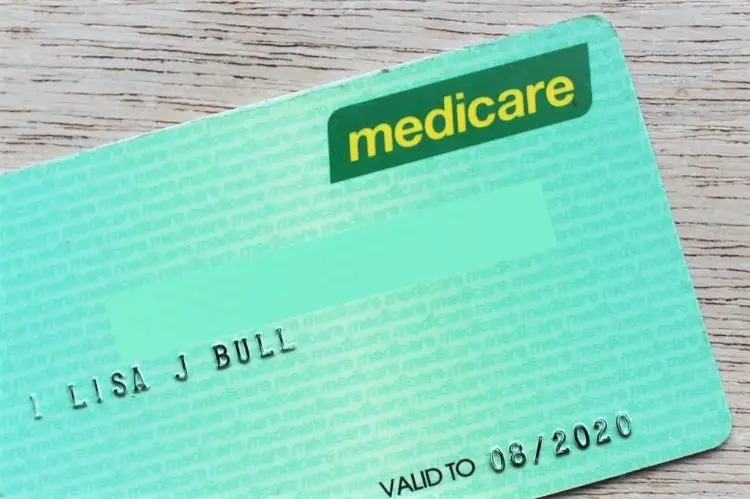
Once you’ve applied, you’ll be given your Medicare numbe. Your Medicare card should be posted to you within 3-4 weeks. In the interim, you can use the Express Plus Medicare app to get a digital copy of your card once you’ve set up your MyGov and Medicare online accounts (see section 14 below).
There are also many Medicare concession and healthcare cards to get cheaper services for those eligible.
14. How to Set up Your Medicare Online Account
When you move to Australia, you should set up your myGov account as soon as possible. This is a really useful portal where you can manage all your government-related items like tax and Medicare.

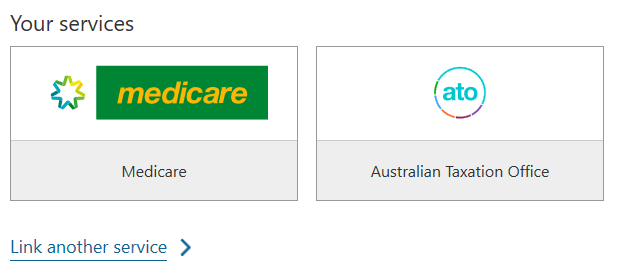
You can then link your account to Medicare and provide your bank details. This means that any Medicare rebates you are due will go straight into your bank account when the receptionist puts them through, rather than back onto your bank card.
You’ll also be able to see a summary of the medical transactions you’ve had to date, including the amounts you’ve paid and been rebated.
15. How is Medicare Funded?
Taxpayers primarily fund Medicare Australia by paying a 2% Medicare levy on their taxable income. Employers withhold this from your wages in the same way they would income tax.
If you’re a low earner, there is a Medicare levy reduction: if you earn below $22,398 in the 2018-19 tax year you don’t pay the levy at all, and if you earn between $22,398 and $27,997 you only pay part of the levy. There are also reductions for some seniors and pensioners, so read through the Medicare levy reduction information for full details.
Conversely, there’s a Medicare levy surcharge (MLS) for high earners who don’t have a required level of private patient hospital cover (from private health insurance). Singles earning above $90,000 or families earning above $180,000 (where your own personal income is above $22,398) are charged an additional 1% – 1.5% of their taxable income.
16. Do You Need Health Insurance in Australia?
While you’re not obliged to take out health insurance in Australia if you’re covered by Medicare, you are encouraged to by the government. In addition to the Medicare levy surcharge explained above, there’s also something called the lifetime health cover (LHC) loading.
If you have not taken out and maintained private patient hospital cover from the year you turn 31, if you take it out later in life you are charged an additional 2% LHC loading on top of your premium for every year that you are aged over 30 and did not have cover (up to 70%). This stops after ten years of continuous cover.
If you’ve moved to Australia from another country after the age of 31, you get 12 months from the date you were registered for full Medicare benefits until the LHC kicks in.
Have a read of the Australian government lifetime health cover information for numerical examples and up-to-date information.
I’ve been told by some Australians that it’s standard to have health insurance, and by others that it’s not worth it! So it’s really up to you to do research and decide for yourself. Obviously it helps take the burden off the public healthcare system if more people have it.
I hope that’s helped you understand Medicare Australia a bit better. It took me a long time to get my head around the system!
To learn more about migrating Down Under, take a look at my other articles on moving to Australia.


Lisa Bull, founder of Dreaming of Down Under, has been living in Australia as a British expat since 2015. After travelling to every state and territory in Australia and living in Perth, Brisbane and Sydney, Lisa knows from first-hand experience the best destinations to visit in Australia and the best budget travel tips. Her guides on this blog have been read by over 700k readers and helped thousands of people achieve their dream of living in or travelling Australia.




Hi we WANT TO go to AUSTRALIA on a parent visa 143 AFTER we HAVE applied how LONG have will we have to wait before we will be on Medicare
If that visa allows you access to Medicare then you can apply as soon as you arrive in Australia. It doesn’t take long to get your card through.